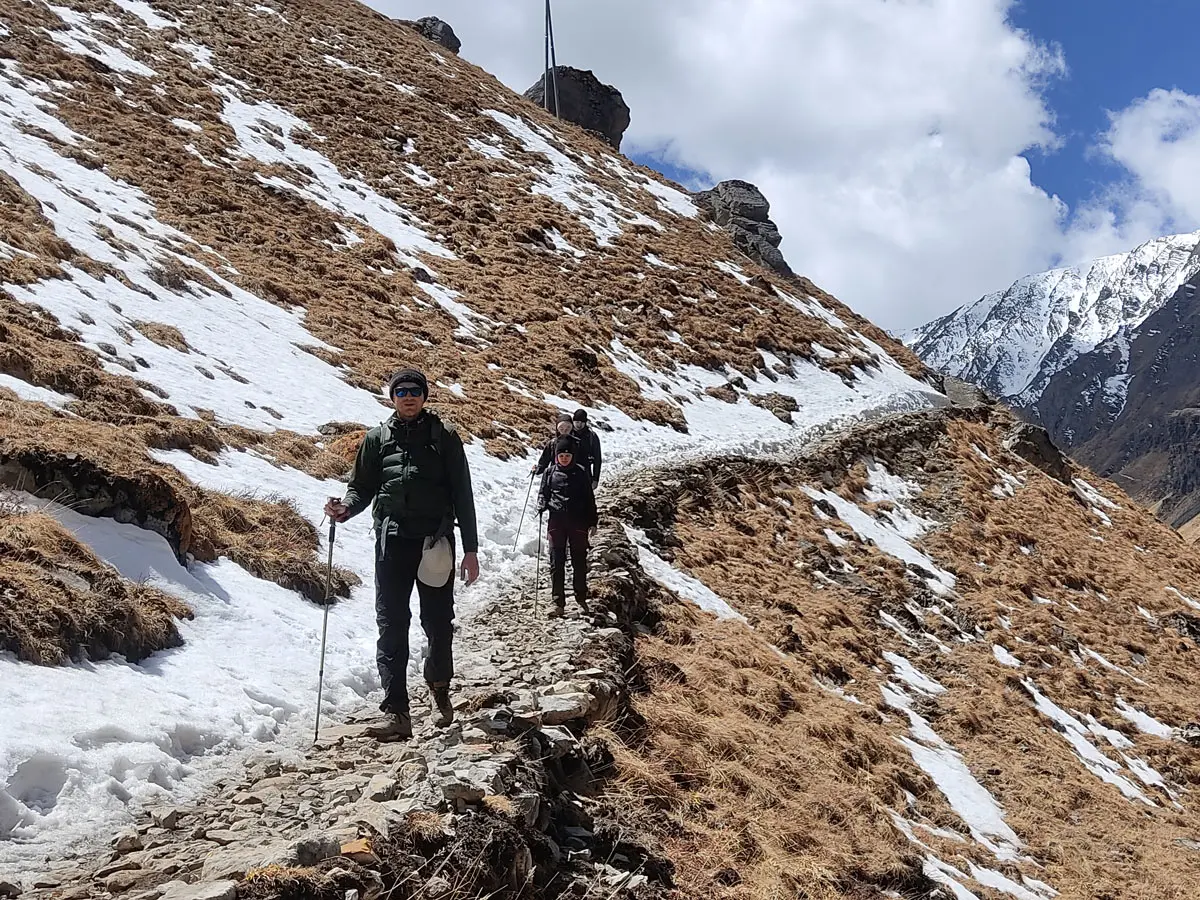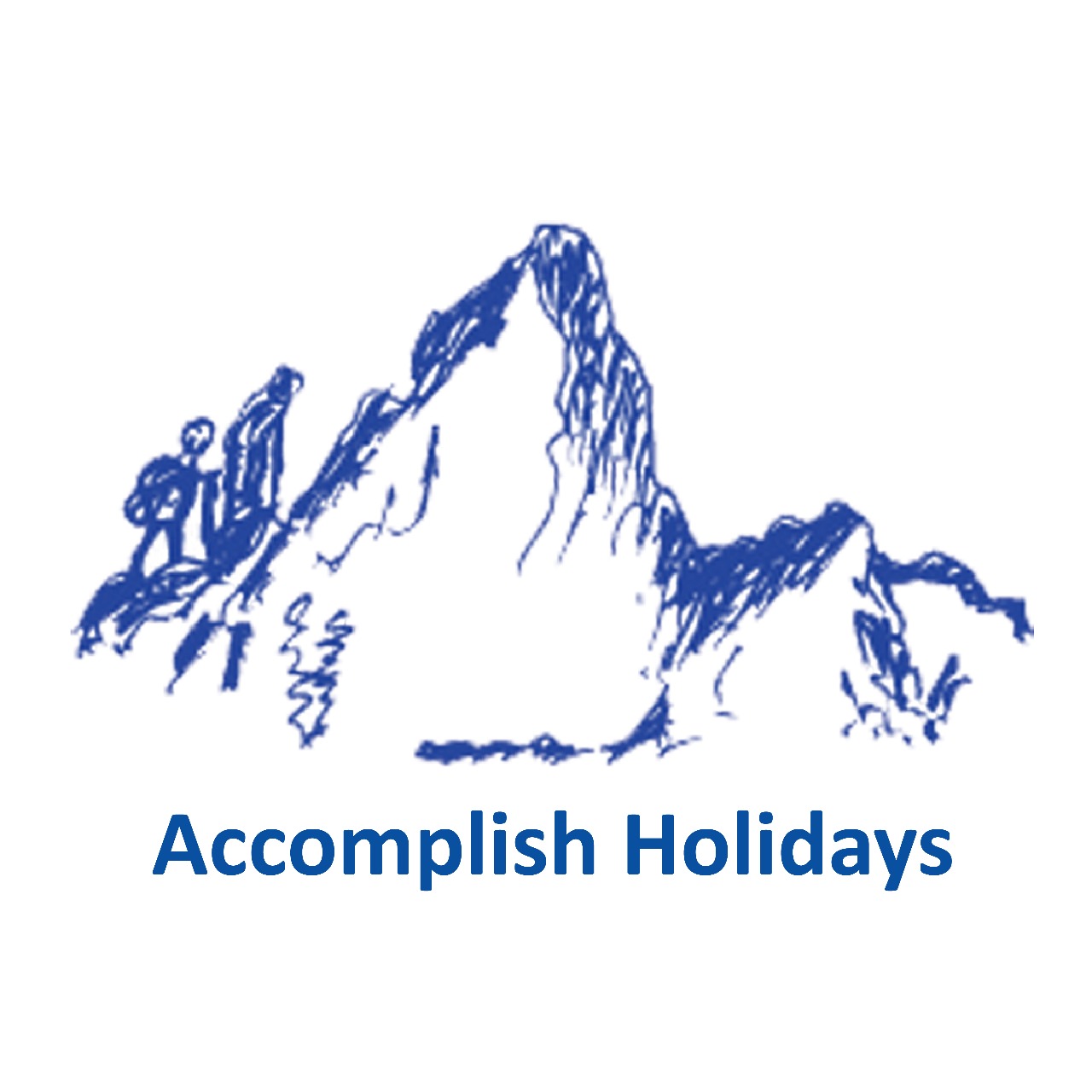Annapurna Circuit Trek - 16 Days

Overview
The Annapurna Circuit Trek, opened to foreign trekkers in 1977, is recognized as one of the most spectacular trekking routes in the world. This trek takes you through lush green valleys, fascinating villages, and offers breathtaking snow-capped views of the majestic Himalayas.
Starting from an altitude of less than 2,000 meters, the Annapurna Circuit allows trekkers to explore the Himalayas from bottom to top, experiencing the region from multiple perspectives. The trek typically spans two weeks, beginning with a scenic drive from Kathmandu to Dharapani along the Marshyangdi River, and concludes with an exciting ride from Birethanti to Pokhara.
Description
This extraordinary trek leads you through charming villages inhabited by diverse ethnic groups, offering an authentic cultural experience alongside majestic Himalayan vistas. The scenery transitions from verdant valleys to the high, arid landscapes of the Tibetan Plateau, providing an ever-changing panorama of nature’s beauty.
The highest point of the Annapurna Circuit is the Thorong La Pass, standing at 5,416 meters. Most trekkers cross the pass counter-clockwise to manage the ascent and descent comfortably. After crossing the pass, the trek descends into the barren, Tibetan-like village of the Kali Gandaki – the world’s deepest gorge – situated between the towering Annapurna and Dhaulagiri mountains. From Muktinath, trekkers continue to Tatopani to enjoy the natural hot springs and climb Poon Hill before descending to Pokhara.
Note: Recent road construction in parts of the Annapurna Circuit has altered some trekking paths. While roads exist, our routes prioritize off-road trails to enhance your trekking experience and preserve the natural beauty of the region.
Itinerary
Book Your Tour
Reserve your ideal trip early for a hassle-free trip; secure comfort and convenience!
Cost
The Cost Includes
- Accommodation: Twin-sharing/double accommodation in a 3-star hotel in Kathmandu for 2 nights and Pokhara for 1 night including breakfast. Private room accommodation can be organized at an extra cost. Twin-sharing guesthouse accommodation for 12 nights during the trek in the Annapurna region, with occasionally dormitory rooms provided only at high-altitude locations.
- Meals & Drinking Water: All standard meals during the trek (12 Breakfasts, 12 Lunches & 12 Dinners) including seasonal fruits. A farewell dinner on the last night in Nepal. Purified drinking water during the trek using a water filter or water purification tablets.
- Transportation: All international and domestic airport transfers on a tourist vehicle. Private 4WD, shared local 4WD/bus, and private tourist vehicles as per the itinerary. For larger groups (4+ clients), private transfer is provided for Muktinath to Tatopani sections.
- Guide and Staff: Experienced, first-aid trained, government licensed, English speaking, and locally recruited trekking guides (2 guides for groups larger than 7). Porters for carrying luggage (1 porter per 2 clients). Wages, accommodation, meals, gear, insurance, and medications for all staff.
- Permits: Annapurna Conservation Area Permit (ACAP), TIMS (Trekkers’ Information Management System) card.
- Benefits and Takeaways: Ace the Himalaya duffel/kit bag, trekking map, sun hat, Buff (Neck Gaiter), a comprehensive first aid kit including an Oximeter to check pulse and oxygen levels, and a trip completion certificate.
- Administrative & Taxes: All administrative expenses and government taxes.
The Cost Excludes
- Meals (lunch and dinner) in Kathmandu and Pokhara.
- International flight fare and airport departure tax.
- Nepal Entry Visa (available on arrival: USD 30 for 15 days, USD 50 for 30 days, USD 125 for 90 days).
- Travel insurance including high-altitude emergency evacuation coverage.
- Any beverages including bottled or boiled water.
- Tips to trekking staff and drivers.
- Personal trekking gear and equipment.
- Any expenses other than those listed in the “Price Includes” section.
Required Equipments
Here is a list of what you might want to pack for the Annapurna Circuit Trek. Please take this as a starting point. You’ll need layers of warmer clothing during the winter. We provide a 75-liter duffel bag for you to use for the trek. It will be given to you during your pre-trip meeting in Kathmandu. The duffle bag is yours to keep. You can also rent a sleeping bag and down jacket at an additional fee of USD 35 each once you are in Kathmandu.
General Gears and Equipment
- Puffy down jacket (rental available for USD 35)
- Four-season (zero degree) sleeping bag (rental available for USD 35)
- Daypack (35-45 liters recommended) with rain cover
- Sleeping bag liner
Upper Body Gear
- Sun hat or cap (Ace the Himalaya baseball cap provided)
- Knitted hat / Beanie
- Scarf or neck gaiter
- Headlamp
- Sunglasses
Torso Gear
- Technical fabric base layer (light for warmer months, heavy for colder months)
- Technical fabric short (2) and long sleeve (2) shirts
- Waterproof, windproof shell
- Fleece jacket or pullover
Lower Body Gear
- Technical fabric base layer (light for warmer months, heavy for colder months)
- Hiking pants (2)
- Comfortable pants for inside the teahouses
- Waterproof/windproof outer shell pants
- Hiking shorts
Hands
- Wool or technical fabric liner gloves
- Hard-shell outer gloves (insulated for colder months)
Feet
- Wool or technical fabric warm socks
- Hiking socks
- Liner socks (optional, e.g., silk)
- Trekking/hiking boots (waterproof recommended)
- Ice cleats / Micro spikes
- Casual shoes
- Gaiters (lightweight for dust or heavy for snow)
Undergarments
- Technical fabric / quick-drying underwear
- Sports bras (for women)
- Pajamas or sleeping clothes
First Aid Kits and Medications
- Sunscreen
- Lip balm
- Ointment
- Note: Guides carry first aid kits and medications, but personal kits are highly recommended
Other Essentials
- Passport
- Extra copies of passport-sized photos
- Reusable water bottle
- Toiletry kits
- Water purification tablets or UV water purifier
- Hydration bladder
- Towel
- Pillowcase
- Toilet paper (2 rolls)
- High protein snacks (e.g., protein bars or nuts)
- Waterproof/dry bags for important documents and money
- Airline tickets (leave a copy at our office in Kathmandu)
- Earplugs
- Trekking poles
Optional Gear
- Power bank or extra batteries
- Cameras and mobile phone
- Cards / book
- Pee bottle / pee funnel for women
- Whistle
- Thermos for hot water
- Comb
